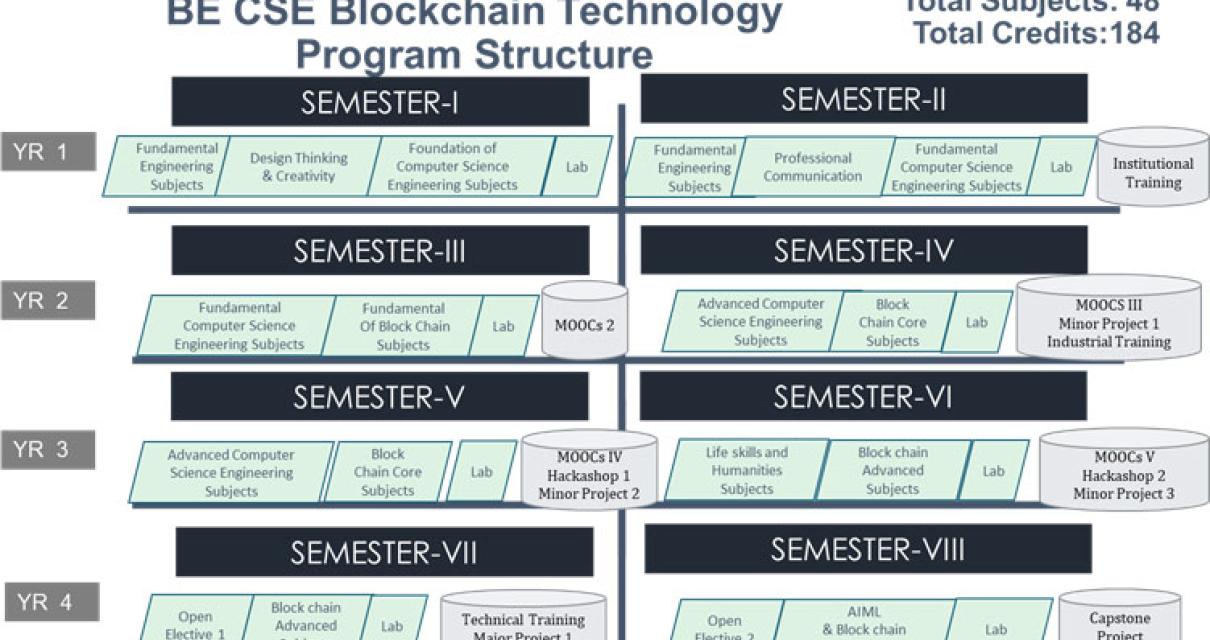Introduction to Blockchain Technology in Computer Science
Blockchain technology is a distributed database that allows for secure, tamper-proof, and transparent transactions. Transactions are verified by network nodes and recorded in a public distributed ledger called a blockchain. Bitcoin, the first and most well-known application of blockchain technology, uses it to create a digital currency.
Blockchain technology has many potential applications in computer science. One application is secure data storage. Blockchain can be used to create a tamper-proof record of data transactions. This can be used to store data such as medical records or financial transactions. Blockchain also allows for secure online transactions.
Another potential application of blockchain technology is in the smart contract market. Smart contracts are contracts that are executed on a blockchain network. They are similar to traditional contracts, but they are executed using blockchain technology. This allows for transparent and secure transactions.
There are many other potential applications of blockchain technology. It is still being developed, so there are many new applications that may be developed in the future.
What is Blockchain Technology?
Blockchain technology is a distributed database that allows for secure, transparent and tamper-proof transactions. It was invented by an anonymous person or group of people under the name Satoshi Nakamoto in 2008. Blockchain is unique in that it allows for a digital currency to be created, negotiated and recorded without the need for a central authority. Transactions are verified by network nodes and then recorded in a public ledger.
How is Blockchain Used?
There are several ways in which blockchain technology is being used. One example is the use of blockchain to facilitate the trading of digital assets. In this scenario, blockchain is used to create a tamper-proof record of the transaction that can be verified by all involved parties. Another example is the use of blockchain to power a peer-to-peer network for the exchange of goods and services. In this scenario, the network nodes act as both the buyers and sellers of goods and services.
The Benefits of Blockchain Technology
The benefits of blockchain technology are many and varied. Here are some of the most important:
1. Immutability
One of the most important benefits of blockchain technology is its immutable nature. Transactions on a blockchain are permanently recorded and cannot be changed. This makes it a secure and trusted platform for conducting business.
2. Transparency
Another benefit of blockchain technology is its transparency. Every transaction on a blockchain is publicly recorded and can be viewed by anyone. This makes it an efficient and secure way to conduct business.
3. Security
Blockchain technology is highly secure. Transactions on a blockchain are verified by a network of computers, making it difficult for hackers to steal data or funds.
4. Low cost
One of the key benefits of blockchain technology is its low cost. Transactions on a blockchain are processed by computers rather than by human beings, which reduces costs associated with transactions.
5. Decentralized
One of the key advantages of blockchain technology is its decentralized nature. This means that the platform is not controlled by any one individual or organization, which makes it more secure and reliable.

How Blockchain Technology Works
Cryptography is the practice of secure communication in the presence of third parties. Cryptography is used to protect data (such as passwords, credit card numbers, and other confidential information) from unauthorized access.
A blockchain is a digital ledger of all cryptocurrency transactions. It is constantly growing as “completed” blocks are added to it with a new set of recordings. Each block contains a cryptographic hash of the previous block, a timestamp and transaction data. Bitcoin nodes use the block chain to differentiate legitimate Bitcoin transactions from attempts to re-spend coins that have already been spent elsewhere.
Bitcoin wallets store the public keys of the associated bitcoin addresses. When a user wishes to spend bitcoins, they generate a new bitcoin address and write it down. They then send the desired amount of bitcoins to the new address.
Applications of Blockchain Technology
1. Blockchain technology can be used to store and transfer data between two parties.
2. Blockchain technology can be used to create a secure digital ledger of transactions.
3. Blockchain technology can be used to track the ownership of assets.
4. Blockchain technology can be used to create a tamper-proof record of a transaction.
5. Blockchain technology can be used to create a digital marketplace.
The Future of Blockchain Technology
1. Increased use in the business world:
Blockchain technology has the potential to revolutionize many different aspects of business. For example, it could help to streamline transactions, reduce costs, and improve security. As blockchain technology continues to gain traction, businesses will increasingly find ways to use it to their advantage.
2. Increased use in the healthcare industry:
Healthcare is one of the industries that is likely to see the greatest benefit from the use of blockchain technology. This is because it could help to streamline many processes and reduce the risk of data breaches. Additionally, it could help to improve patient trust and coordination between different care providers.
3. Increased use in the financial industry:
Blockchain technology has the potential to revolutionize the way financial transactions are conducted. For example, it could help to reduce the risk of fraud and increase the accuracy of data. As blockchain technology continues to gain traction, the financial sector is likely to find many other applications for it.
4. Increased use in the retail industry:
The retail industry is one of the sectors that is likely to see the most significant impact from the use of blockchain technology. This is because it could help to reduce the cost of transactions and improve security. Additionally, it could help to improve customer experience by eliminating the need for middlemen.

challenges of Blockchain Technology
There are a few challenges that come with the use of blockchain technology. The first is that it can be difficult to scale. This is because blockchain is a distributed ledger system, which means that it needs a large number of nodes in order to be effective. Additionally, it can be expensive to operate a blockchain system. Finally, blockchain technology is not immune to cybercrime.

investment in Blockchain Technology
One of the key advantages of blockchain technology is that it is an immutable and transparent ledger of all cryptocurrency transactions. This eliminates the need for a trusted third party, such as a bank, to process and verify transactions. As a result, blockchain technology could potentially lead to a wider adoption of cryptocurrencies and other digital assets.
Some companies are also investing in blockchain technology to improve the security and transparency of their operations. For example, Walmart has developed a blockchain platform to track food products from farm to store. IBM is also developing a blockchain platform to track shipping containers. These platforms could help improve the safety and quality of food products and shipping containers, respectively.
Overall, blockchain technology is likely to continue to grow in popularity and be adopted by more companies. This could lead to increased demand for cryptocurrencies and other digital assets.
How can blockchain be used in computer science?
Blockchain can be used in computer science to create secure and tamper-proof digital records.
What are the benefits of using blockchain technology in computer science?
There are many benefits to using blockchain technology in computer science. One benefit is that blockchains are tamper-proof. This means that it is difficult for anyone to change or tamper with the data stored on a blockchain. This is important because it ensures that the data stored on a blockchain is accurate and reliable.
Another benefit of using blockchain technology in computer science is that it is decentralized. This means that there is no central server or authority that manages the blockchain. This is important because it allows for greater security and transparency.
Finally, blockchains are also transparent. This means that everyone can see the data stored on a blockchain. This is important because it allows for greater accountability and transparency.